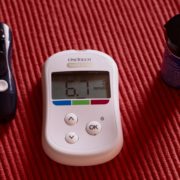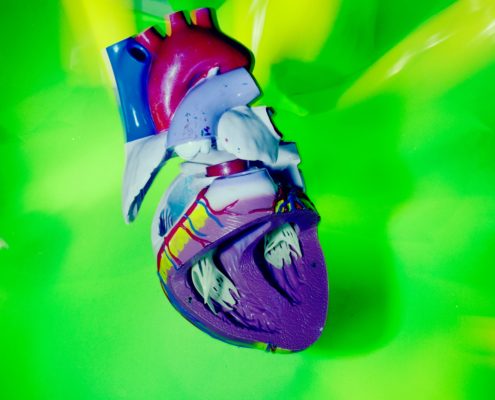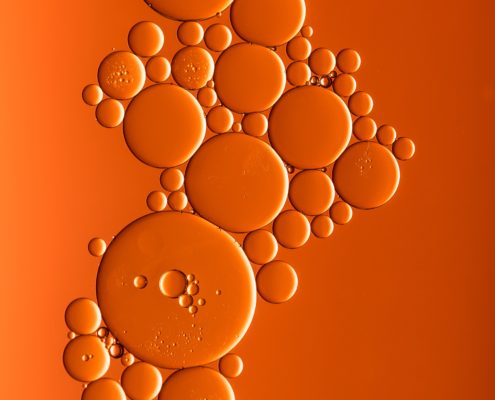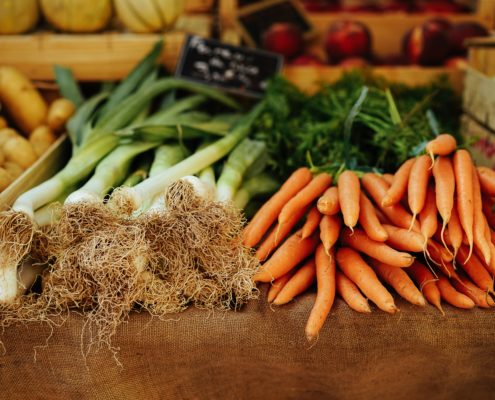How to Lower Your Setpoint Weight and Reverse Type 2 Diabetes
If you’re like most people who have fought to keep their weight down – then watched helplessly as it crept (or leapt) back up – you’re more than a little interested in learning how to lower your setpoint weight to achieve lasting weight loss. If you have type 2 diabetes, it’s more important than ever for you to find a reliable way to shed pounds so that you can reverse type 2 diabetes.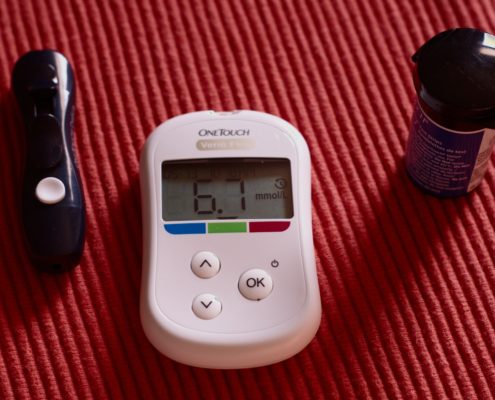
But it can’t happen by taking the same approach to weight loss – the counting calories, calorie deficit approach – that has failed so many times before.
To be super clear: you have not failed those diets. Those diets failed you! Obesity is a disease just like its sister disease, type 2 diabetes. Restricting the quantity of calories you consume will not fix this problem or reverse type 2 diabetes. Improving the quality of the calories you eat, however, will work miracles at lowering your setpoint weight and preventing or reversing type 2 diabetes.
Yes, Lowering your Setpoint Weight CAN Reverse Type 2 Diabetes
The SANE Solution has proven, in over 13,000 clinical trials, to effectively lower setpoint weight, helping hundreds of thousands of people lose weight effortlessly and permanently. Such weight loss can and does reverse type 2 diabetes.
Before we dive into the details of how to lower the setpoint weight to reverse type 2 diabetes, though, we should discuss obesity and type 2 diabetes.
Insulin Resistance, Obesity, and Type 2 Diabetes
Doctors have known for quite awhile that there is a close relationship between obesity and type 2 diabetes. They have known that obese individuals often develop type 2 diabetes, but they didn’t necessarily know the reason for this. Science, however, has provided the reason.
Research has proven that insulin resistance causes obesity.
This is how insulin works:
When you consume something with carbohydrates or sugar, your body converts it into glucose. (If you’re monitoring your blood sugar, you’ll see that your level goes up right after eating.) Your pancreas releases the hormone insulin, which acts as a key to open your cells to the glucose. The cells accept the amount of glucose they’re supposed to have, and if you’re monitoring your blood sugar, you will see that your blood sugar level goes down.
For whatever reason, many people’s cells become unresponsive to insulin knocking at their door. This leaves excess glucose and insulin circulating in their bloodstreams. Insulin tells the body that it needs more fat and that it doesn’t need to burn fat. With so much insulin always circulating in your bloodstream, you literally cannot burn fat.
Eventually, obesity-driven insulin resistance causes type 2 diabetes.
Causes of Insulin Resistance
There are many reasons why you might become insulin resistant. Genetic plays a role in your susceptibility to obesity and to type 2 diabetes. However, whether you develop type 2 diabetes usually involves a combination of factors, including:
- Consuming a steady diet of inSANE foods, such as sugars, processed foods, and sugary sodas.
- Living a sedentary lifestyle
- Being overweight or obese
- Having a family history of diabetes
- Having high levels of inflammation
- Experiencing heightened stress (yes, stress can disrupt your blood sugar control!)
Prevalence and Dangers of Type 2 Diabetes
The major cause of obesity and type 2 diabetes, however, is the consumption of low-quality foods that have become a regular part of the American diet, as it has worldwide. Indeed, the statistics on obesity and type 2 diabetes reflect these low-quality dietary choices.
For instance, a third of the population of the United States is obese, and this figure has been projected to rise to 50 percent by 2030. Over 600 million adults worldwide are obese. The statistics on type 2 diabetes have been keeping pace with those of obesity.
Though more than 29 million people in the United States suffer with diabetes, an estimated 8.1 million more may be undiagnosed and oblivious to the danger that lives inside them. According to the International Diabetes Federation, more than 400 million people worldwide have diabetes.
These figures are staggering, but only the tip of the iceberg to the future numbers if society doesn’t find a way to cure the obesity problem once and for all. What kind of problems?
Health Complications of Type 2 Diabetes
Type 2 diabetes can affect every organ in the body, so its complications are varied and can be devastating. Some complications of type 2 diabetes include:
- Blindness
- Cataracts
- Heart disease
- Stroke
- High blood pressure
- Neuropathy (nerve damage)
- Gallbladder disease
- Kidney disease
- Leg and foot amputations
Treatments for Type 2 Diabetes
The basic treatment for type 2 diabetes is to control blood sugar through diet and, if necessary, medication and/or insulin injections. The dietary recommendations for type 2 diabetes, if followed, will help keep blood sugar levels steady. However, lowering your setpoint weight can prevent or reverse type 2 diabetes, as well as help you lose weight safely and permanently.

Lowering Setpoint Weight: Key to Reversing Type 2 Diabetes?
Though you can reverse this disease by lowering your setpoint weight and making some lifestyle changes, it is always better to try to prevent type 2 diabetes than to reverse it. Research has shown that losing just 10-15 pounds can reduce your risk of developing type 2 diabetes, so working on weight loss issues is obviously a big issue. However, the way most people try to do this is counterproductive.
Severely restricting calories, going on starvation diets, working out for hours to burn calories and lose weight – those are methods that are second nature to most dieters. But these methods not only don’t work for long-term weight loss and to reduce your risk of type 2 diabetes, but they actually work against you. Instead of fat loss, these weight loss plans lead to muscle loss. Since muscle burns more calories than fat, losing muscle mass slows your metabolism.
The kind of dieting most people do also directly leads to yo-yo dieting, and this is because calorie restriction raises the setpoint weight.
The Thing about the Setpoint Weight
If you’ve struggled with your weight, you know how ornery and downright nasty your fat stores can be when you try to rid yourself of them. In the beginning, they give way a little bit. The first 10 or so pounds are a breeze to drop, just enough to get you excited, and then…
Nothing, or almost nothing.
Then, in defiance, you cut your calories even more, and it’s even worse. You wonder how some “expert” somewhere came up with that calorie-deficit theory, because it’s certainly not working that way for you.
You are correct.
Though calories are important in weight loss, the calorie deficit theory that we’ve been struggling to make work for over 40 years, missed the mark quite a bit. It assumes, for instance, that a calorie is a calorie is a calorie. Calories are the same, the theory goes, and it doesn’t matter from which food it comes, as long as you end up with a calorie deficit, you will use such-and-such number of pounds based on some calculation that they’ve been using forever.
There’s much more to it, than that.
Hormones, the Metabolism, and Setpoint Weight
Your body isn’t some tidy scale that measures and compares calories in with calories out. Rather, studies have shown that the body is more like a thermostat. It actually adjusts the calorie burn based on the needs of the body and the setpoint weight.
This is why a naturally thin people – you know, the ones you’ve always envied because they had such a “high metabolism” – could eat anything they wanted without gaining an ounce. Their bodies, you see, were adjusting the calorie burn of several metabolic processes to keep them at their lower setpoint weight. Easy peasy. It is doing it for you, too. It adjusts the calorie burn to keep you at your higher setpoint weight.
It should be obvious to you by now that you have a setpoint weight – it’s that weight that you tend to stay around – and it varies by 10-20 pounds. Your setpoint weight is the amount of fat your body thinks you should have based on signals from your hormones. There are hormones in your brain, your gut, and your fat stores, all sending signals of any changes so that the body can keep you alive. The body, you see, always seeks balance.
Though there is a large genetic component to obesity and type 2 diabetes, diet and lifestyle factors play a big role, as well. In this case, if you eat an inSANE, low-quality diet of processed foods, sugars, and carbohydrates, it creates a clog in your hormonal system. Your hormones can no longer send proper messages to each other. The result is fat accumulation, obesity and eventually, type 2 diabetes.
SANE Eating Tips to Lower your Setpoint Weight
As mentioned earlier, calories are important, but it’s your body’s job to monitor and adjust them. Studies have shown that it’s the quality, not the quantity, of the foods we eat that determines our setpoint weight.
The quality of food is based on three things:
- Satiety: How quickly calories fill us up, and how long they keep us full.
- Aggression: How much and how quickly a food impacts our hormones, namely sugars.
- Nutrition: How many nutrients – such as vitamins, minerals, and essential fatty acids – these calories provide.
- Efficiency: How many of these calories can the body store as fat.
The more Satisfying, unAggressive, Nutritious, and inEfficient at being stored at fat, the higher the calories’ quality. This makes it a SANE calorie or food item, one that heals our hormones, keeps us from overeating, and lowers our setpoint weight.
The exact opposite is the case for low-quality, inSANE foods. Foods such as sweets, starches and processed foods cause a hormonal clog, spur overeating, and raise your setpoint weight.
Many studies have shown that those who eat SANE diets lose more weight than those who eat inSANE ones.
Principles of SANE Eating
The principles of SANE eating are ridiculously simple. All you need to do remember, really, is try to eat foods as close to their natural state as possible. This means purchase vegetables in a state you could pick if you had your own garden – fresh or frozen is fine – and meat you could hunt.
SANE foods will be on the perimeter of the store, many of which may not have ingredient labels for you to read.
Here’s some basic principles:
- Stay away from processed foods and anything with added sugar as much as possible.
- Avoid all starches
- Beef should be grass fed.
- All meat and seafood should be humanely raised.
Specific SANE Food Tips
There are four SANE Food groups. Try to eat the first three together at every meal as these will work together to fill you up stabilize your blood sugar.
Non-starchy vegetables
Have 10+ servings of non-starchy vegetables per day. Having just three or four servings of non-starchy vegetables at each meal will give you the 10+ you need for the day. But if you aren’t a big veggie fan, don’t worry. Simply purchase a high-powered blender and make green smoothies. This is actually the very best way to get all your servings of veggies in a day.
Nutrient-Dense Protein
Have 3-5 servings per day. (A serving is the size of a man’s hand.) Studies have shown that protein sends signals to your short- and long-term satiety hormones, so eating this at every meal ensures you’ll fill up fast, stay full longer, and avoid snacking on bad things between meals.
Whole-food fats
Have 3-5 servings a day, and be sure you eat the food, and not just the oil. Contrary to what you may have heard, eating fat does not make you fat, and it is necessary to many bodily functions. Plus, fat satisfies your appetite and keeps you from overeating.
Low-fructose fruits
Have 0-3 servings per day. In general, berries and citrus fruits are your low-fructose options. They can be a yummy treat, or add some berries or half of an orange to a green smoothie.
Eating SANE is fun, easy, and it will help prevent and even reverse type 2 diabetes. What more could you want?
Next Step: Lower Your Setpoint Weight and Reverse Type 2 Diabetes with SANE
There is much more to the SANE lifestyle. Getting 7-8 hours of sleep a night, reducing stress, staying hydrated, and performing eccentric exercises are other important factors in lowering your setpoint.
Ready to finally break free from the yo-yo dieting rollercoaster that can lead to diabesity? By balancing your hormones and lowering your body’s set-point weight, SANE is the solution you’ve been dreaming of.
Want to know the exact foods and serving sizes scientifically proven by over 1,300 peer-reviewed research studies to boost metabolism, burn fat and enjoy virtually effortless weight loss like a naturally thin person?
Begin your exciting journey to lasting, healthy weight loss today. Download the free SANE metabolism boosting food list, cheat sheet and “Eat More, Burn More” weight loss program by



